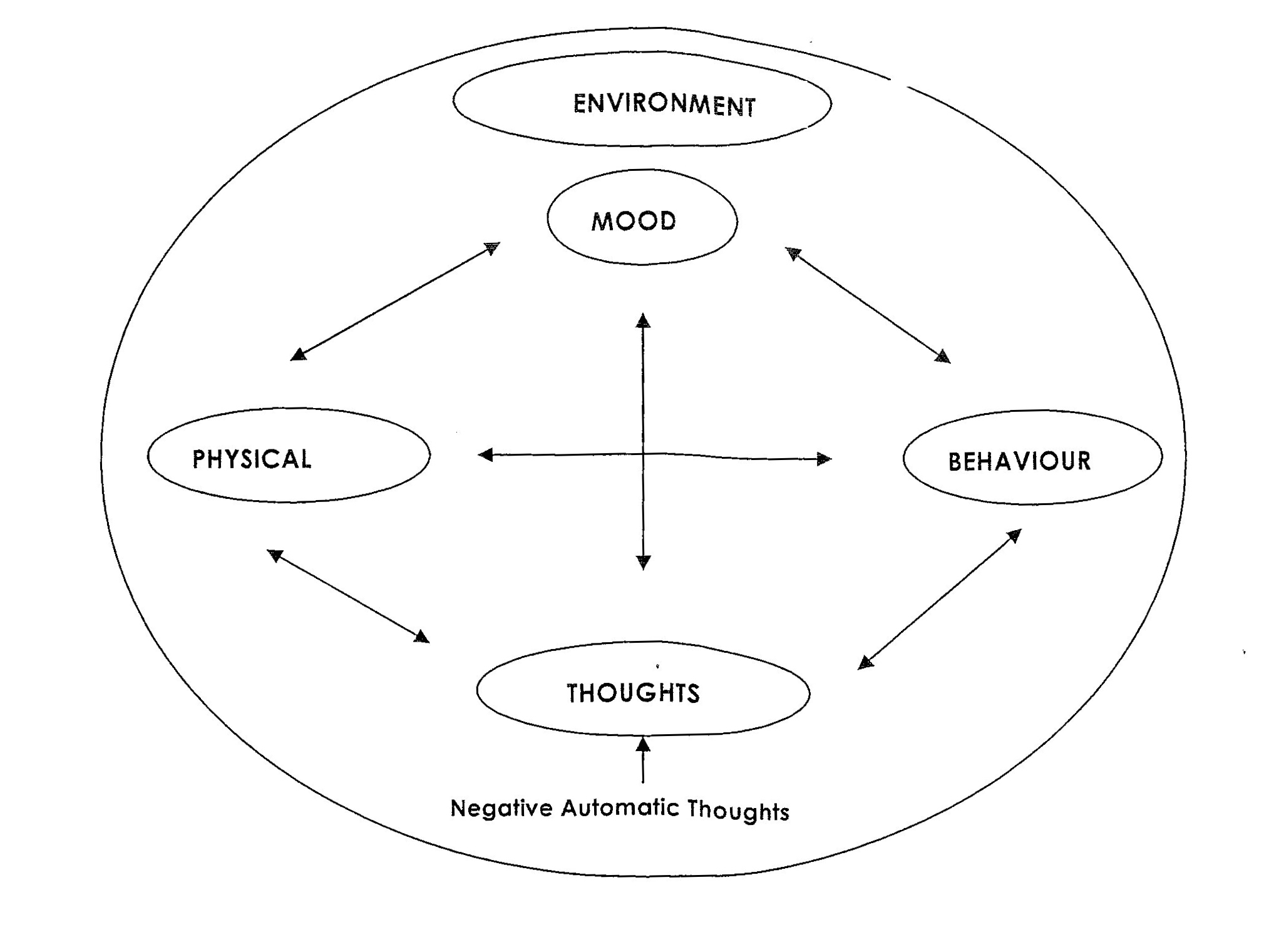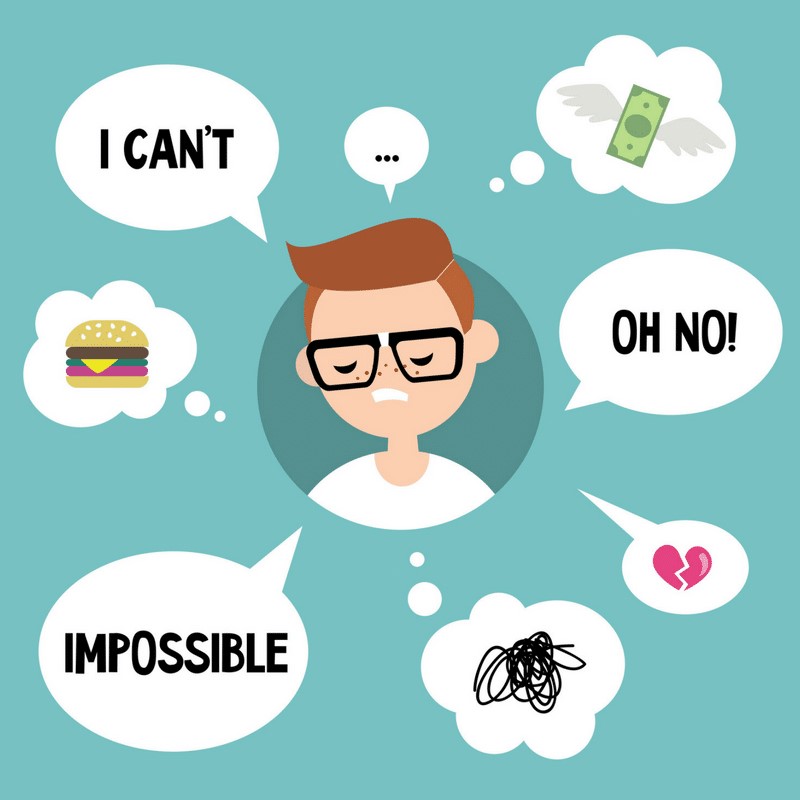INTERNAL THOUGHTS
Conversations in my head are called ‘internal dialogue’ in the world of therapy. It’s useful to follow the talk as you often get a better quality of conversation!
That said, the internal dialogue can be harsh and critical. That’s not so nice and not so useful to me. Experiments can give me – and you- some insight into our own ways of thinking about ourselves and other people.
Some negative thoughts can arise without warning – automatically. They are difficult to suppress. Such thoughts are called NAT’s (Negative Automatic Thoughts) by Cognitive Behavioural therapists. Like other gnats, these thoughts bite and irritate.
NAT’s (Negative Automatic Thoughts)
Such thoughts are part of a constant ‘internal dialogue‘; one that goes on in our head 24/7. They can become a common source of disturbance, sometimes labelled ‘rumination’. Later I expect to demonstrate how these thoughts can be changed.
For the moment, however, I will focus on a number of ‘normal’ processes; the thoughts, feelings and sensation that happen within our bodies. A useful site to visit for more information is:
https://www.skillsyouneed.com/ps/managing-self-dialogue.html
Internal dialogue can be both helpful and unhelpful; sometimes it keeps us focused and attentive. Other times, it reinforces high emotions and makes it difficult to step back from our feelings.
A positive internal dialogue may help us ‘look on the bright side’ and we may find that our mood improves.
Our internal dialogue is important for our mental well-being and success in life.
How NAT’s are obstacles on the scenic route
So what can go wrong with our thinking capacity as we move along the scenic route?
Most of us who have been depressed to varying degrees will have observed our biased and negative ways of viewing the world. At the time, those feelings are so powerful that the feel real – they are real to all intents and purposes. The meaning we create is that ‘real’ is, as ‘real’ does – to misquote Forrest Gump. The sensations associated with those feelings are, indeed, real. Equally, the thoughts associate with those feelings and sensations can become distorted – that’s the negative bias I mention in other places.
At that point, it can be just one small step from that pattern of thinking, toward a pattern of unhelpful behaviour.
For instance, the thought, “I’m no good” can lead to self-harm; or, “Life has no meaning” can lead to suicide bids. In particular, the thought “I will always feel this way” leading to a sense of futility and resignation. Note how this example can appear in my Window of Tolerance (WoT) as an extreme example of rigidity. Elsewhere, I have said that one definition of madness is to keep thinking and doing the same thing, and expect something to change!
EXPERIMENT: note down some of your negative thoughts when life becomes a challenge for you. Afterward, as you review them, notice the characteristics of some thoughts. Where would you place some of those thoughts on the four extremes in my WoT illustration?
Can you see elements that are:
• automatic and involuntary.
• difficult to switch off.
• just popping into your head without any effort on your part.
• distorted as compared to your ‘normal’ way of thinking.
• not fitting in with all of the facts….
• …. yet plausible, so you sometimes accept them as facts.
• unhelpful.
• make it difficult to change.
• stop you from getting what you want out of life.
The main goal of many of your experiments will be to break out of a vicious circle created when these characteristics begin to feed one off another.
Without a break-out, it is easy to exaggerate the ‘badness’ and magnify our gloomy view of our existence.
EXPERIMENT: recognise when you are thinking negatively.
Part One: Name a Negative Automatic Thought or NAT. Speak it out clearly, in your head. Reply to it with something like:”you are not my best friend … and you may be trying to tell me something useful. I wonder what that is?”). Like any skill, it takes regular practice to catch them ‘on the fly’. Do not feel discouraged if you have difficulties to start with.
Part Two: Can you, just once, become more accepting of some negative thought as you ‘wonder’ about it. Some will make you feel bad – anxious, sad, depressed, hopeless, guilty, angry. You are likely to notice this as you practice the body scan mentioned earlier. Instead of being overwhelmed by these feelings, can use them as a cue for action. For example, can you speak out the negative thought, label the bad feeling and then, as before, follow up with:
…. even though I feel [name the bad feeling], I can still deeply and completely accept myself.
This phrase is an affirmation. It may prove more difficult than you think to say it and certainly more difficult to accept it. It can feel false and even embarrassing. Do not be put off by this reaction. Persist, and repeat the statement in italics. Bear in mind you are dealing with a belief here. Beliefs do not, generally, change overnight. They take some working on. Here, you have one that says you are not OK when you feel bad and another says you can feel bad and still remain an OK person. Which one might prove more helpful over the years to come?
If it helps, one further action is to write down this affirmation and blu-tak it somewhere prominent, such as on your PC screen. It may not be tomorrow, or next week, that the phrase starts to make any sense. Even so, at some time to come, you will be able to accept the view that: I prefer the belief that I am an OK person when I have bad feelings.
A FURTHER EXPERIMENT
is to write down another negative automatic thought (NAT) as soon as it occurs. Note, as before, any feelings or sensations that arise from it. Add notes using some of the headings listed below:
Where you were at the time;
Who were you with;
What time of day was it?
What was happening just beforehand?
What did you do immediately afterwards.
This will be familiar to you by now from previous experiments I have put forward. There are many cognitive behavioural therapy (CBT) Record Sheets that could be used to record your answers. Some will appear as we continue with these experiments. An excellent overview of the connections listed here, and developed by CBT, can be found in Greenberger and Padesky’s(1995) ‘current bun’ model.
Use these headings, within the ‘bun’, to help organise your experiments.
Your records can include information from each area – for each experimental situation. for example, who was there with you and where were you. The records can identify the mood you experienced, the behaviour displayed by you and the other person and any other information available to identify the thoughts that were in play: ANOTHER EXPERIMENT: Rate just one emotion you felt as you completed the last experiment – using a Subjective Unit of Discomfort (SUD), a personal measure rated from 1 – 10, where ‘one’ means the experience you are having is only just noticeable. Ten is the measure for the worst possible level of that experience.
ANOTHER EXPERIMENT: Rate just one emotion you felt as you completed the last experiment – using a Subjective Unit of Discomfort (SUD), a personal measure rated from 1 – 10, where ‘one’ means the experience you are having is only just noticeable. Ten is the measure for the worst possible level of that experience.
Never feel the need to justify the measure you apply. [Look down the link page a bit to find out more about SUDS – or search the web site, if that helps]. Any SUD you use is merely ‘true’ for you at the time you use it. It helps us notice when a feeling increases in intensity, reduces or stays the same.
Review your situation using SUD’s and consider:
- What were you doing when you started to feel bad?
- What feelings mean ‘bad’ for you? Some families have ‘favourite’ bad feelings, as well as ‘OK’ ones.
- Are some or all of those feelings familiar to you from the past? If so, from recent or distant past?
It is generally true that most of us have a ‘favourite’ bad feeling – we may not want it in our rational moments but it hangs around like the proverbial bad penny.
In the Transactional Analytical (TA) model of therapy this characteristic bad feeling is called a RACKET.
A SAFE EXPERIMENT
Float back to a recent event that gave you a tough time. There is a 12 minute podcast that I made to demonstrate this safe experiment in actual practice. See: https://anchor.fm/robin-trewartha/episodes/A-safe-experiment-with-letting-go-es61lc.
Otherwise, simply remember when was it, and who was there? Notice your response at the time. Did you have familiar response, e.g. backing off, hiding or hitting out? As you reflect on it, are you aware of this being one a several similar situations. Use the Body Scan to just notice any negative feelings (NATS) come into your body as you remember such events?
How long could you hang on to them? More importantly, what happened when, in due time, you could not hang on to those feelings any longer? When you have recorded some notes, and taken some time out, consider what alternative actions were available to you then and, indeed, NOW.
Other leads you could consider
What actions could make up a ‘safe experiment’?
